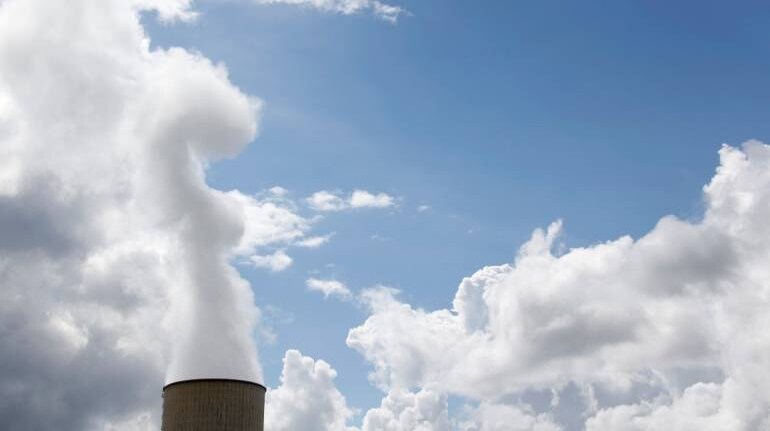

India may need to invest about 11% of Gross Domestic Product (GDP) over the next three decades as the world makes the transition to the goal of net- zero emissions by 2050, compared to the global average of about 7.5 per cent of GDP, according to consulting firm McKinsey.
In a study released on Tuesday, McKinsey said the higher investment will be required because the Indian economy is largely driven by fossil fuels, with 40 percent of GDP exposed to such economic sectors.
These higher investments will also be accompanied by phases of higher electricity cost, an investment shift to low fossil emission technologies and jobs, said McKinsey. These shifts will be felt across regions and sectors but disproportionately in power, and some industries such as cement and steel.
To put the number in perspective, 11 percent of India’s estimated GDP for 2021-22 at present prices can be spent to build roughly 170,000 kilometres of four-lane highways, according to a Moneycontrol estimate.
This much money can be used to build over five times the entire length of India’s four-lane roads.
India, the third largest contributor to global emissions, has traditionally been sixth or seventh and has a much lower share if one were to calculate the emissions on a per capita basis, said Rajat Gupta, senior partner at McKinsey and Asia leader of sustainability at the consulting firm.
India ranks third largely because of emissions from power generation (about 3 percent of global carbon dioxide emissions) and carbon-emitting heavy industries.
And most of India’s emissions are rather recent, with 45 percent of India’s cumulative historical emissions taking place only since 2010. Prime Minister Narendra Modi, at the COP-26 Summit held in Glasgow late last year, said India will be a net zero emitter by 2070, not 2050.
Power assets in India may get stranded
The global transition to net-zero could lead to assets getting stranded, which means existing physical assets remain either underutilized or are shut down before their utility ends. In the power sector alone, $2.1 trillion worth of assets could be stranded by 2050, McKinsey estimates. Of this, 80 percent would be relatively new fossil fuel–based power plants in operation today, primarily coal-fired plants in countries such as China and India.
“Early retirement of these assets can lead to value reduction, bankruptcies and credit defaults, with potential knock-on effects on the global financial system. And markets may well pronounce their verdict before the actual stranding has taken place,” the consultancy said.
Under current policies, 60 percent of the annual average investment would be on low-emissions assets. That needs to go up to 80 percent for net zero by 2050, said Gupta. Much of this spending in the country will be used to cut the use of coal power and increase low-emissions electricity capacity.
Moreover, the investment, including in India, needed in the initial few years will be much higher. For instance, the cost of producing equivalent solar-based power will require 1.5-2 times higher (taking into account grid costs) compared to coal, said Gupta.
Cost increases in power, steel, cement will be likely in the range of 20-100 percent depending on the technologies used, said Gupta. However, if we don’t build coal, steel or power plants in cleaner ways, then we will be stuck with stranded assets, said Gupta.
So India will either have to adopt cleaner technologies for building coal, steel, cement plants, or replace them with sustainable, low emission alternatives like renewables. During three decades, India’s energy demand is expected to grow four-fold.
Indian economy’s exposure to net-zero transition will be very high
India will be amongst the countries that will face the highest levels of exposure to transition as it has a relatively lower GDP per capita with a higher concentration of jobs, GDP, and capital stock in sectors that have emissions-intensive operations, products, and supply chains.
Other studies have earlier indicated that 30 to 65 percent of the emissions in China and India are triggered by foreign final demand or export in some manufacturing sectors, such as chemicals, textiles, leather, and apparel.
“As demand for high-emissions goods falls and low-emissions goods increases...shifts in consumer preferences or the presence of carbon taxes or other regulatory measures could produce advantages for countries that make products with low emissions intensity” said the report. So India may lose export business to other countries if it is seen as a laggard in adopting greener technologies to produce its goods.
India needs to plan carefully for net-zero transitions
India should clearly define its path to short-term and long-term targets through debate, said Gupta. Without careful planning, countries like India may continue to spend on lower-cost, high-emissions assets that could force the assets to shut down after a few years as the world transitions to a net-zero path.
Gupta called for pricing carbon more explicitly although India already prices carbon through taxes on fossil fuels and a cess on coal. “It will be good to price carbon explicitly,” he said.
Job shifts and balancing many needs
There will be job losses in emission-intensive sectors. But more jobs will be created involving newer technologies and India may see near-term job opportunities in the construction sector, said the report.
Consumers may face additional upfront capital costs and have to spend more in the near term on electricity if cost increases are passed through, and lower-income households are naturally more at risk.
Consumer spending habits may also be affected by decarbonisation efforts, including the need to replace goods that burn fossil fuel, like vehicles and home heating systems, and potentially modify diets to reduce high-emissions products like beef and lamb.
The upfront capital spending for the net-zero transition could yield lower operating costs over time for consumers. For example, the total cost of ownership of electric vehicles is expected to be lower than internal combustion engine cars in most regions by 2025.
Mekala Krishnan, partner at the McKinsey Global Institute and lead author of the report, said that navigating the journey will be challenging as in the next three decades we aim to transform what took 100-150 years to build.
Countries like India will have to balance the transition to net zero with other priorities—such as a growing economy with high energy demand, rapid urbanization, and severe impacts of climate change.
Half of Indians, by 2050, will be impacted by droughts, floods, heat-waves and storms at a much higher frequency than now. Also, 400 million Indians will not be able to work outside a quarter of the time.
Discover the latest business news, Sensex, and Nifty updates. Obtain Personal Finance insights, tax queries, and expert opinions on Moneycontrol or download the Moneycontrol App to stay updated!